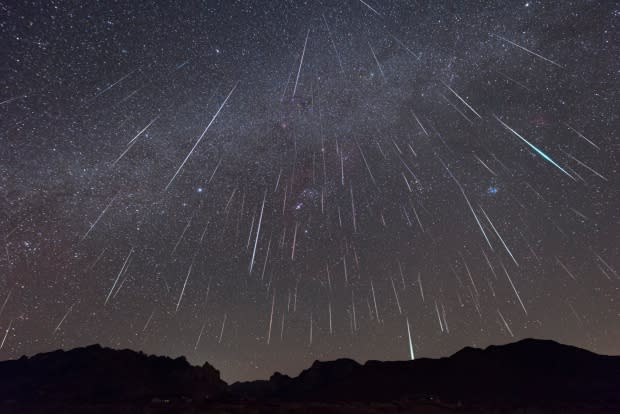Heads up! Geminid meteor shower peaks this week
The most active meteor shower of the year, the Geminids, is set to reach its peak of activity this week.
Meteors — grains of debris that burn up in our atmosphere — can be spotted on any given night, but almost once a month, Earth plows through a collection of dust and particles left over from a passing comet or asteroid, causing what's known as a meteor shower. When this happens, we can see more meteors than on average night.
The Geminid meteor shower occurs as Earth moves through the debris shed from asteroid 3200 Phaethon as it orbits the sun.
This interactive map shows how Earth passes through the remains shed by the asteroid.
While the Perseid meteor shower in August is likely the most popular of the year — thanks to the warmer temperatures and reduced chance of cloud cover — the Geminid meteor shower produces more "shooting stars" per hour in a dark-sky location — 120 compared to about 100 for the Perseids.
The Geminid meteor shower runs from Dec. 4 to Dec. 16, but it peaks on the night of Dec. 13–14.
How to watch
The best thing about meteor showers is they require no equipment to spot. Just bundle up, head outside and look up.
Here are a few other tips to improve your chances of spotting the show.
For starters, go out to a dark-sky location such as a park. Make sure to leave your phone in your pocket. The bright white light makes it difficult for your eyes to adjust to the darkness and you'll miss out on faint meteors.
The area from which the meteors appear to originate is called the radiant. The meteor shower is named after the constellation in that part of the sky.
In this case, the radiant occurs in Gemini, the twins, hence the name Geminids.

But that doesn't mean you have to look in that direction. Just look up and you should see some streaking across the sky. And remember: keep looking up. Don't turn to speak to someone or you might miss one.
The Geminids are better known for their brightness than their speed, so it's unlikely many of them will produce long tails.
As an added bonus, if you get to a dark-sky location, take a look up near the Pleiades, a close group of stars easily seen in the night sky. You might notice a faint, bluish circle. That's comet 46P/Wirtanen, which is making its closest approach to Earth on Dec. 16. You might want to pack a pair of binoculars to spot it, but it should be visible to the naked eye in good conditions.


